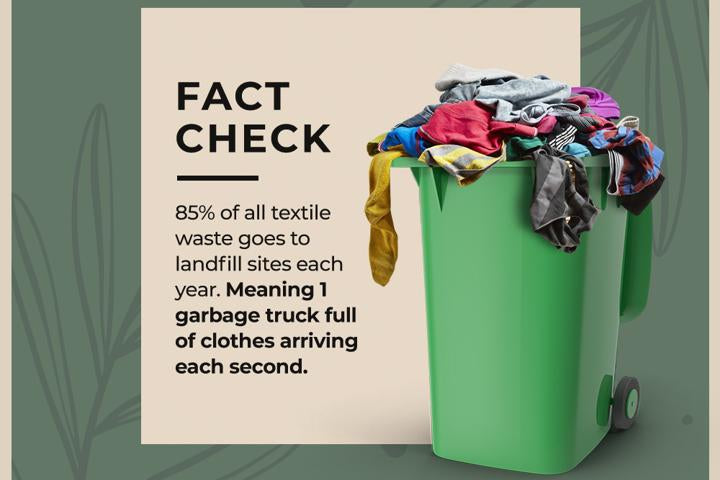Did you know? Every second, the equivalent of one garbage truck of textiles is landfilled or burned.

The 21st century’s fashion industry isn’t exactly known for being particularly sustainable, but did you know that one of its biggest issues is the sheer amount of waste it produces?
According to a report released in 2017 by the Ellen McArthur Foundation, the equivalent of one garbage truck full of textiles goes to waste every second. The majority of this textile waste is sent to landfill, and the rest is usually incinerated.
Where is all this waste coming from
One garbage truck every second sure seems like a massive amount of waste – so where is all this waste coming from? The sources can be divided into two main categories.
Production waste
First is the waste created during production. Many fast-fashion companies, which don’t pay too close attention to maximising the efficiency of their patternmaking and other operations, often end up wasting a lot of perfectly useable fabric. On average, 15% of the fabric is wasted during the design process alone, and 35% of all materials used in garment construction go to waste before the piece of clothing even reaches its buyer.
Aside from cut-offs due to inefficient design and patternmaking, this production waste is also due to last-minute design changes expected in the companies working with the latest trends or materials broken or otherwise spoilt in the transport.
We also need to address the sheer amount of clothing made but never sold. This is because of the high seasonality which penetrates fast fashion design, making it so that a garment that entered the store floor two months ago becomes outdated, leading to it being incinerated or shredded. Often, brands which burn their excess stock then greenwash by saying that this way, they’re recycling unsold garment into energy when in fact, they’re just avoiding addressing the issue of textile waste they’re responsible for.
Post-consumer waste
Fast fashion has also made us, as consumers, much more prone to overconsumption, buying without thinking and then throwing away perfectly useable items just to buy new ones.
If we want to feel like we’re doing a good thing, we often donate clothing – however, much of that doesn’t get reused. In some cases, charity shops send stock they cannot resell to developing countries – however, as the True Cost documentary points out, this is often to the detriment of local clothing manufacturers who ultimately go bankrupt as a result.
In truth, if we want to stop these massive amounts of clothing waste, donating is not the answer – we need to control overconsuming cheap, low-quality garments and adopt a more circular mindset.
Circular economy as a solution
To end this never-ending loop of textile waste, the fashion industry needs to become more circular. This includes implementing more renewable resources, upcycling and recycling existing textile waste, becoming more efficient in patternmaking, finding creative ways to use waste generated in production and more.
It’s also essential that fast fashion stops offering us up to 56 collections every year in an attempt to force us to keep buying. While this may make a few fashion CEOs very rich in the short term, it certainly isn’t a viable option to move towards sustainable development and eradicate clothing waste.






Leave a comment